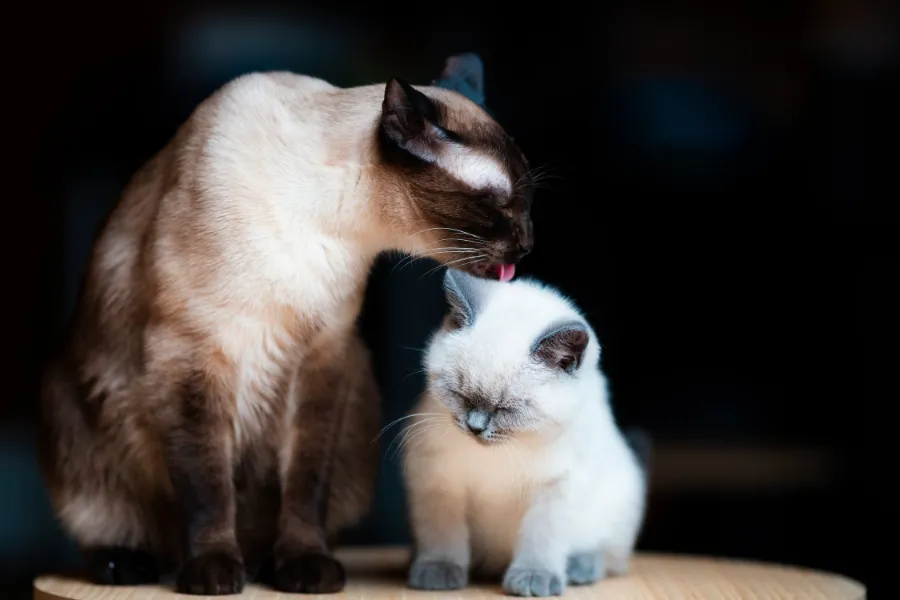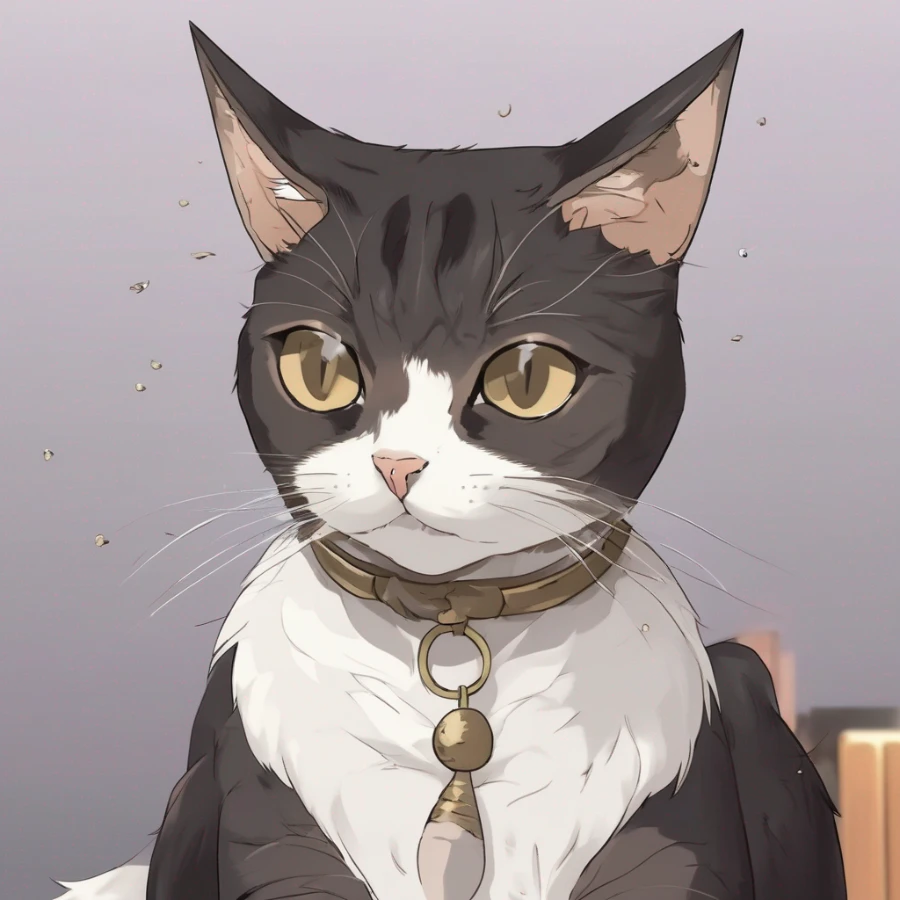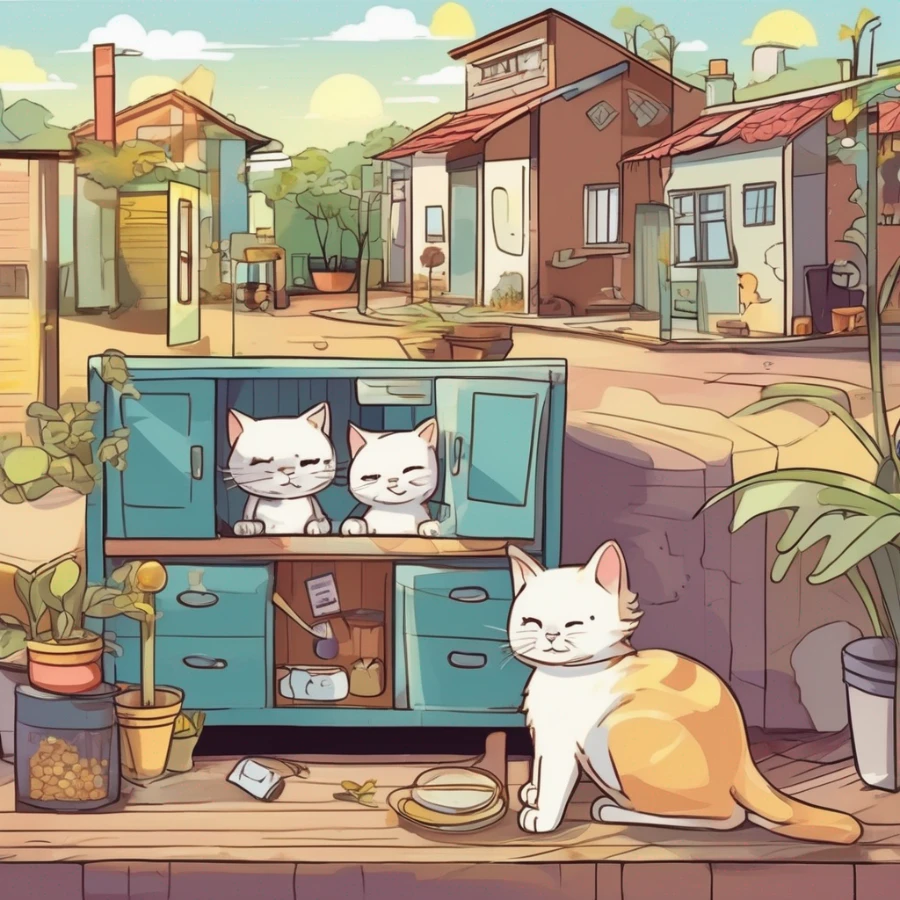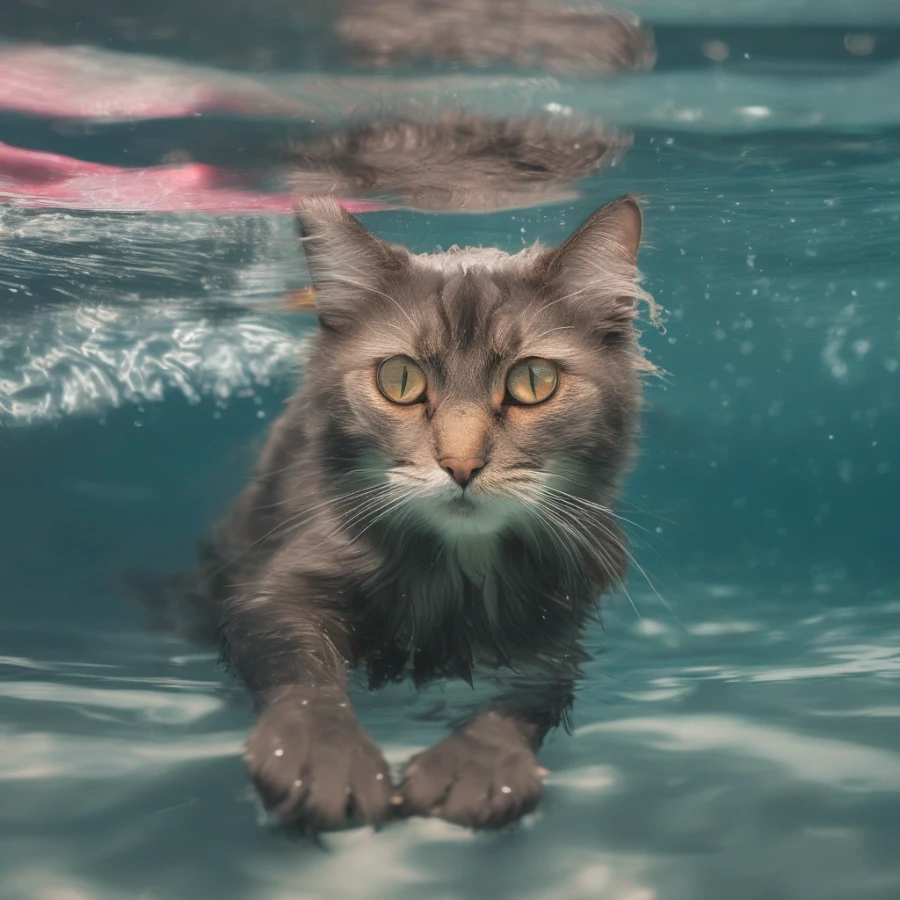Why Do Cats Lick Each Other ? Top 10 Reasons

Published by: Tatsiana Korshik
Time to Read: 5 Min

Hey there, fellow cat aficionados! Ever caught your feline friends engaging in some serious licking sessions? Wondered what's the deal with all that grooming? Well, you're not alone. In this purr-worthy exploration, we're diving into the intriguing world of why cats lick each other. Buckle up for a whisker-twitching ride as we unravel the top 10 reasons behind this quirky cat behavior. It's not just about cleanliness – these furballs have a whole social language of their own!
Mutual grooming is like a feline handshake, solidifying social bonds among cats. It's their way of saying, "Hey, you're part of my crew." When your cats engage in allogrooming, they're essentially reinforcing their pack mentality and establishing trust.
Cats are meticulous groomers, but sometimes certain spots are hard to reach solo. Enter the buddy system. Licking each other's inaccessible areas is their way of ensuring a spotless coat from nose to tail.
When your cat extends a grooming session to you or a fellow feline, it's a sign of comfort and trust. Essentially, they're saying, "You're family, and I'm cool with that." It's a display of affection that goes beyond the purrs.
Grooming isn't just about hygiene; it's a power play. The cat doing the licking may assert dominance, while the one being groomed may be acknowledging a submissive role. It's like the feline version of a boss and employee relationship.
Believe it or not, cats can be quite the health inspectors. Mutual grooming allows them to keep an eye out for any irregularities in each other's fur, skin, or overall health. It's like having a furry healthcare companion.
Cats have scent glands on their faces and around their necks. When they lick each other, they're not just cleaning – they're also spreading their individual scents. It's a subtle way of marking territory and saying, "This is us."
Just like humans might indulge in a soothing activity to de-stress, cats turn to grooming. Mutual grooming sessions can be therapeutic, helping to alleviate anxiety and create a calming environment for your feline friends.
Adult cats take on the role of grooming mentors, teaching kittens the art of self-care. It's not just about cleanliness; it's a vital lesson in feline etiquette, ensuring the next generation stays sleek and stylish.
For mating pairs, grooming is a way to reinforce their bond. It's not just a preening session; it's a reaffirmation of their connection. Watch out for the extra affectionate grooming – it might be a sign of a strong mate relationship.
Different cat breeds have distinct grooming practices influenced by their backgrounds. Understanding these cultural nuances can provide insights into your cat's behavior. From the elegant Siamese to the fluffy Maine Coon, each has its own grooming style.
There you have it – the lowdown on why cats engage in the intricate dance of mutual grooming. Next time you catch your feline friends in a grooming session, know that there's more to it than meets the eye. It's a symphony of social bonding, communication, and a touch of cat culture.
Cats often express their complex social dynamics through a sequence of affectionate licking followed by bouts of play-fighting. This behavior is a manifestation of their intricate communication, blending bonding with a playful assertion of dominance or boundaries.
The sequence of licking followed by fighting is a reflection of the multifaceted nature of feline relationships. The initial licking serves as a gesture of bonding and familiarity, but the subsequent play-fighting or disputes may arise from natural instincts, testing boundaries, or expressing playful dominance.
Cats are nuanced in their behaviors. When cats engage in licking but then abruptly stop or display a change in behavior, it could be influenced by factors like mood shifts, discomfort, or a desire for personal space. Observing their body language and context is crucial in understanding the subtle reasons behind the interruption in their grooming session.
Male cats engage in mutual grooming as a way to strengthen social bonds. Licking between male cats serves as a means of establishing camaraderie and reaffirming their connection. It contributes to the overall social harmony within a group of male felines.
Licking followed by biting is a common feline behavior that combines affectionate grooming with playful interaction. Cats use this sequence to express bonding, establish hierarchy, or engage in social play. The biting, when not aggressive, is often a part of their natural playfulness.
Aggressive licking among cats can be a result of various factors, including establishing dominance, marking territory through scent exchange, or even relieving stress. Understanding the context and observing the overall body language of the cats involved is crucial in deciphering whether the licking is a friendly interaction or a more assertive behavior.
10 Reasons Why Do Cats Lick Each Other
Cats are mysterious creatures, and their penchant for licking each other goes beyond mere hygiene. Ever wondered why they indulge in this seemingly simple yet complex behavior? Buckle up, because we're about to unveil the top 10 reasons why your furry friends are swapping licks.1. Social Bonding
Mutual grooming is like a feline handshake, solidifying social bonds among cats. It's their way of saying, "Hey, you're part of my crew." When your cats engage in allogrooming, they're essentially reinforcing their pack mentality and establishing trust.
2. Cleaning Each Other's Hard-to-Reach Spots:
Cats are meticulous groomers, but sometimes certain spots are hard to reach solo. Enter the buddy system. Licking each other's inaccessible areas is their way of ensuring a spotless coat from nose to tail.
3. Communicating Comfort and Trust:
When your cat extends a grooming session to you or a fellow feline, it's a sign of comfort and trust. Essentially, they're saying, "You're family, and I'm cool with that." It's a display of affection that goes beyond the purrs.
4. Showing Dominance and Submission:
Grooming isn't just about hygiene; it's a power play. The cat doing the licking may assert dominance, while the one being groomed may be acknowledging a submissive role. It's like the feline version of a boss and employee relationship.
5. Medical Checkups:
Believe it or not, cats can be quite the health inspectors. Mutual grooming allows them to keep an eye out for any irregularities in each other's fur, skin, or overall health. It's like having a furry healthcare companion.
6. Spreading Familiar Scents:
Cats have scent glands on their faces and around their necks. When they lick each other, they're not just cleaning – they're also spreading their individual scents. It's a subtle way of marking territory and saying, "This is us."
7. Stress Relief:
Just like humans might indulge in a soothing activity to de-stress, cats turn to grooming. Mutual grooming sessions can be therapeutic, helping to alleviate anxiety and create a calming environment for your feline friends.
8. Teaching Kittens Proper Grooming:
Adult cats take on the role of grooming mentors, teaching kittens the art of self-care. It's not just about cleanliness; it's a vital lesson in feline etiquette, ensuring the next generation stays sleek and stylish.
9. Reinforcing Mate Bonds:
For mating pairs, grooming is a way to reinforce their bond. It's not just a preening session; it's a reaffirmation of their connection. Watch out for the extra affectionate grooming – it might be a sign of a strong mate relationship.
10. Cultural Influences:
Different cat breeds have distinct grooming practices influenced by their backgrounds. Understanding these cultural nuances can provide insights into your cat's behavior. From the elegant Siamese to the fluffy Maine Coon, each has its own grooming style.
Final Thoughts
There you have it – the lowdown on why cats engage in the intricate dance of mutual grooming. Next time you catch your feline friends in a grooming session, know that there's more to it than meets the eye. It's a symphony of social bonding, communication, and a touch of cat culture.
FAQ: Why Do Cats Lick Each Other?

Why do cats lick each other and then fight?
Cats often express their complex social dynamics through a sequence of affectionate licking followed by bouts of play-fighting. This behavior is a manifestation of their intricate communication, blending bonding with a playful assertion of dominance or boundaries.
Why do cats lick each other then fight?
The sequence of licking followed by fighting is a reflection of the multifaceted nature of feline relationships. The initial licking serves as a gesture of bonding and familiarity, but the subsequent play-fighting or disputes may arise from natural instincts, testing boundaries, or expressing playful dominance.
Why do cats lick each other but?
Cats are nuanced in their behaviors. When cats engage in licking but then abruptly stop or display a change in behavior, it could be influenced by factors like mood shifts, discomfort, or a desire for personal space. Observing their body language and context is crucial in understanding the subtle reasons behind the interruption in their grooming session.
Why do male cats lick each other?
Male cats engage in mutual grooming as a way to strengthen social bonds. Licking between male cats serves as a means of establishing camaraderie and reaffirming their connection. It contributes to the overall social harmony within a group of male felines.
Why do cats lick and bite each other?
Licking followed by biting is a common feline behavior that combines affectionate grooming with playful interaction. Cats use this sequence to express bonding, establish hierarchy, or engage in social play. The biting, when not aggressive, is often a part of their natural playfulness.
Why do cats aggressively lick each other?
Aggressive licking among cats can be a result of various factors, including establishing dominance, marking territory through scent exchange, or even relieving stress. Understanding the context and observing the overall body language of the cats involved is crucial in deciphering whether the licking is a friendly interaction or a more assertive behavior.



